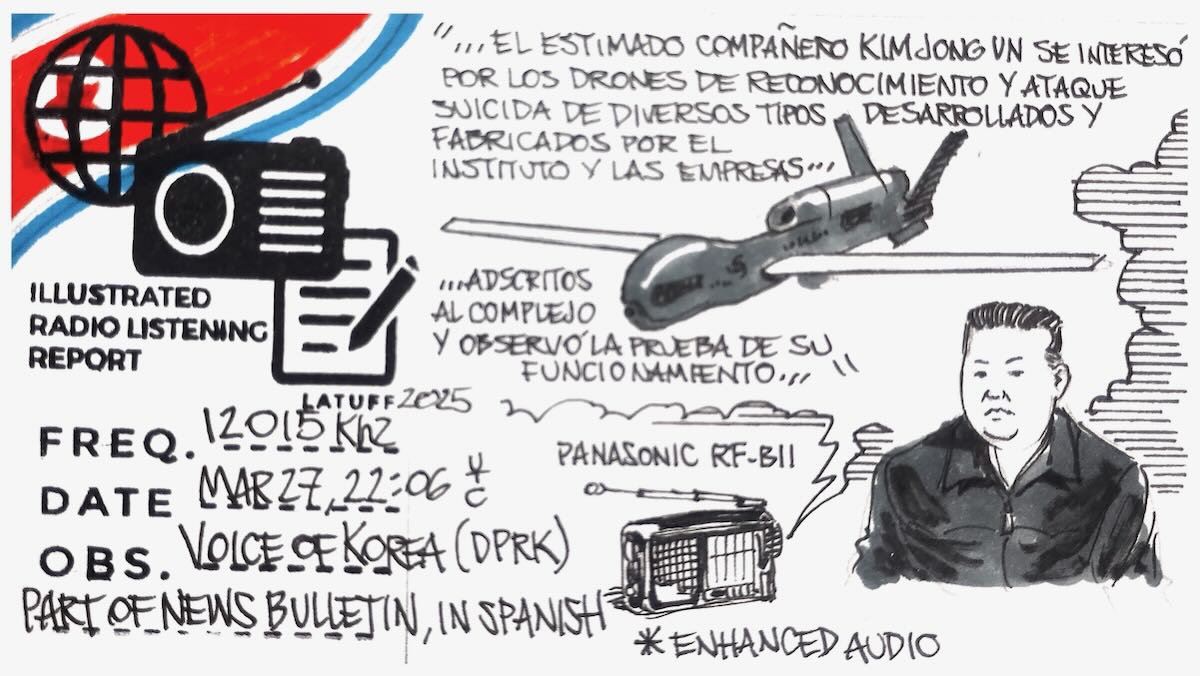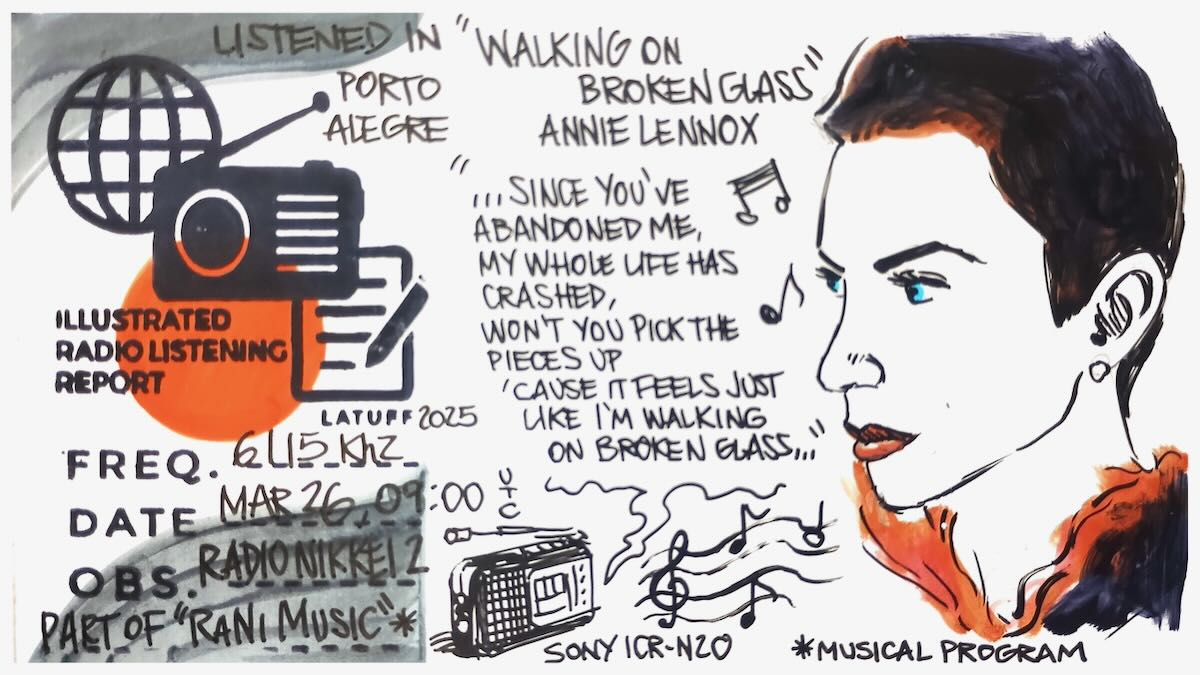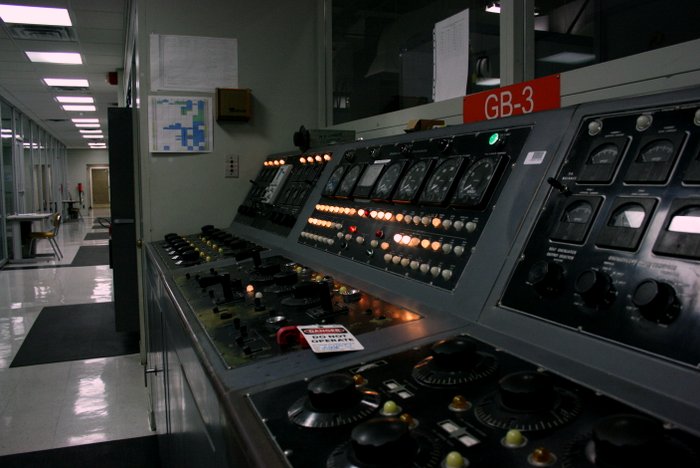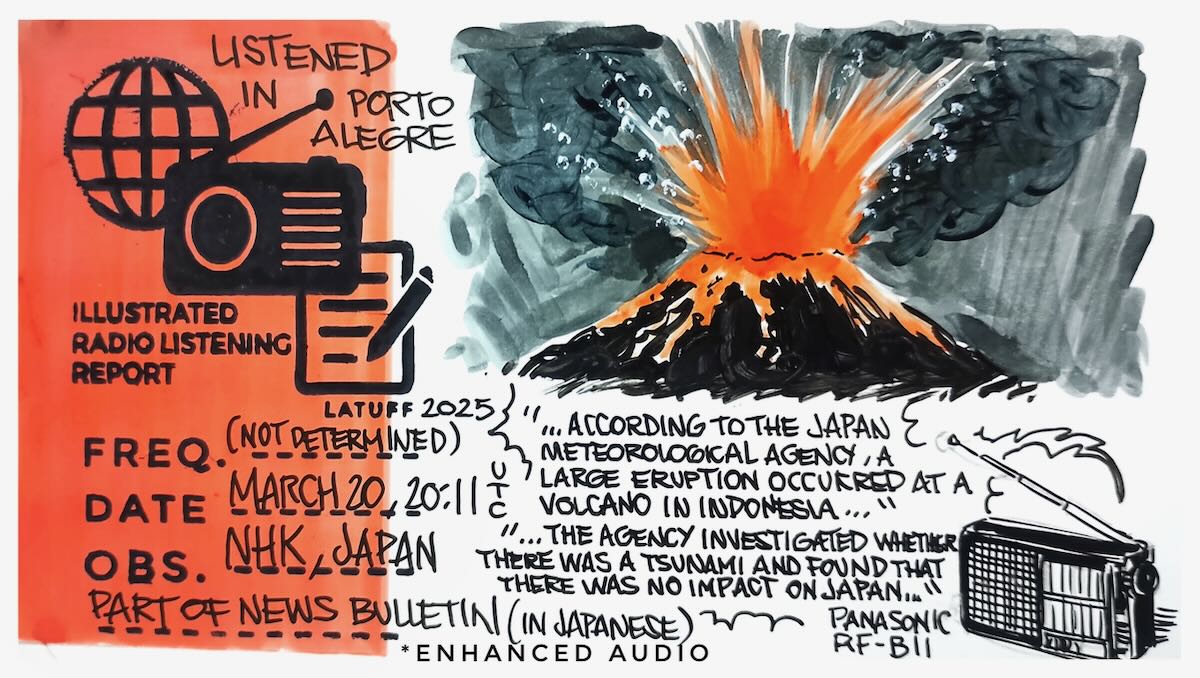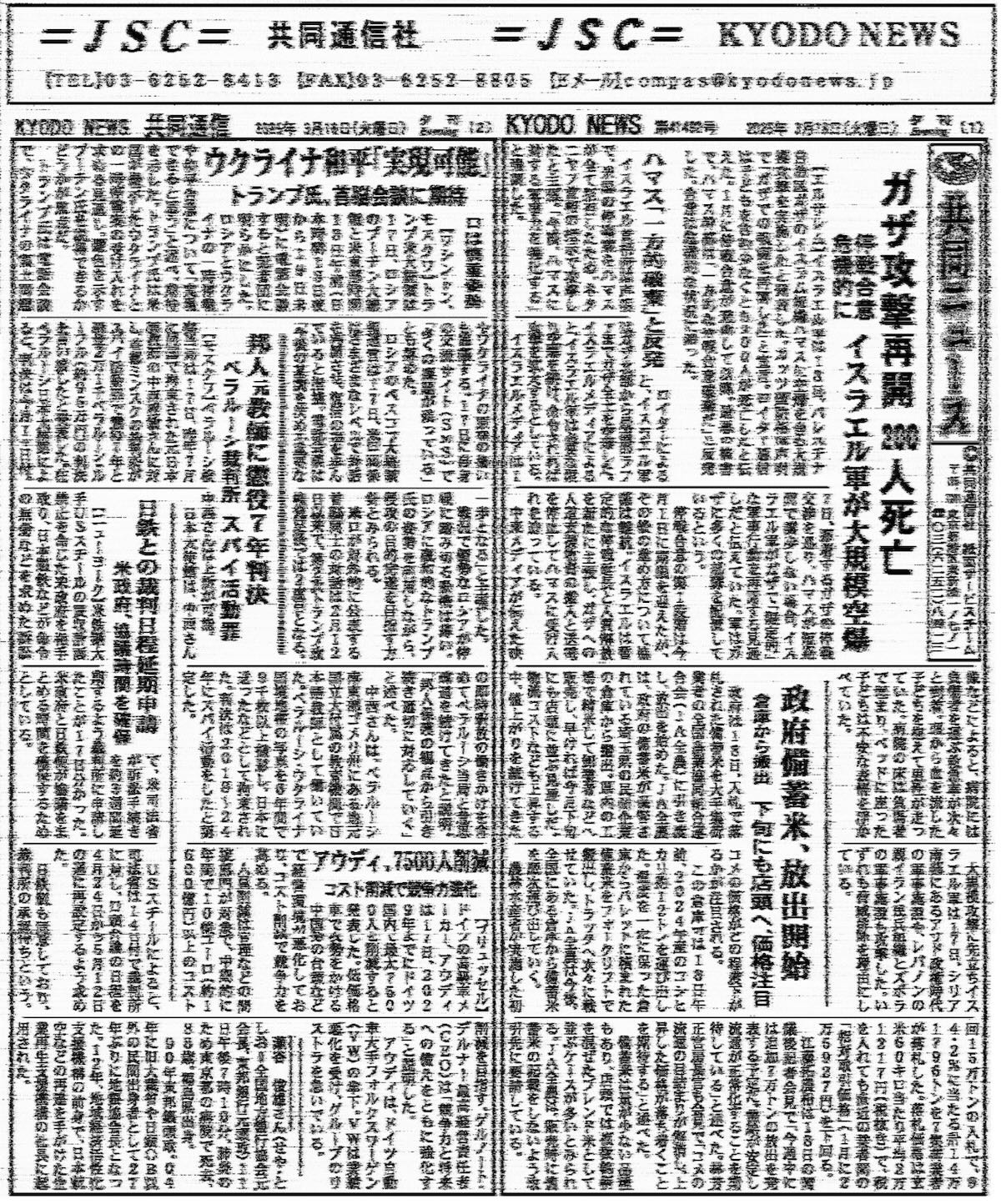Many thanks to SWLing Post contributor and noted political cartoonist, Carlos Latuff, who shares illustrated radio listening report of a recent Voice of Korea broadcast.
Carlos notes:
Kim Jong Un inspects AI suicide attack drones, Voice of Korea:
Part of the Voice of Korea (DPRK) Spanish-language news bulletin on the reconnaissance and attack drone test inspected by Kim Jong-un. Listened in Porto Alegre, Brazil, on a Panasonic RF-B11 receiver.

